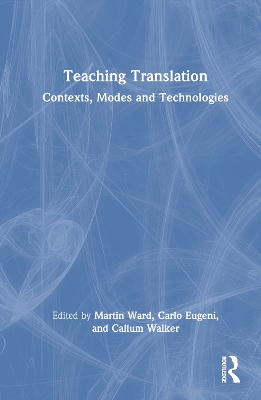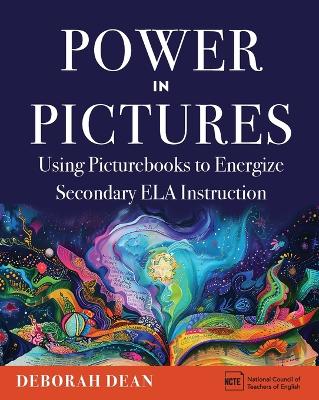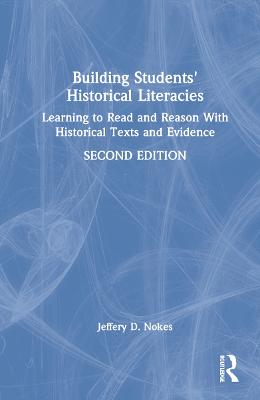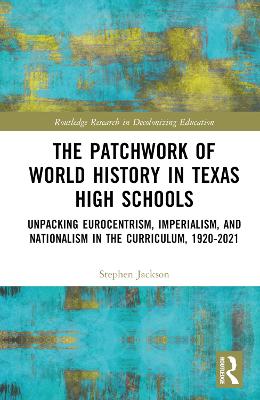Building Students' Historical Literacies
 portes grátis
portes grátis
Building Students' Historical Literacies
Learning to Read and Reason With Historical Texts and Evidence
Nokes, Jeffery D.
Taylor & Francis Ltd
03/2022
304
Mole
Inglês
9781032014050
15 a 20 dias
430
Descrição não disponível.
Foreword by Tina Haefner
Acknowledgements
Part I Exploring the Critical Literacies used in Historical Inquiry
Chapter 1 Why Teach Historical Literacies: Evaluating the Source and Context of this Book
Chapter 2 Building Historical Literacies: A New Purpose for History Teaching
Chapter 3 Defining Historical Literacies: What and How do Historians Read and Write?
Chapter 4 Teaching Historical Literacies: Supporting Students as Active Readers and Writers
Chapter 5 What is History? Establishing the Need for Historical Literacies in Historical Inquiry
Chapter 6 Expanding Historical Literacies: Critically Reading Many Genres of Evidence
Part II Strategies, Habits of Mind, Concepts, and Texts
Chapter 7 Using Critical Reading Strategies with Primary Sources
Chapter 8 Helping Students Make Inferences with Artifacts
Chapter 9 Teaching Historical Concepts with Visual Texts
Chapter 10 Seeing Others' Perspectives Through Historical Fiction
Chapter 11 Fostering Healthy Skepticism Using Textbooks and Secondary Sources
Chapter 12 Exploring Historical Complexity With Audio and Video Texts
Chapter 13 Building an Argument with Historical Numbers
Chapter 14 Finding Patterns and Overcoming Barriers in Teaching Through Inquiry
Index
Acknowledgements
Part I Exploring the Critical Literacies used in Historical Inquiry
Chapter 1 Why Teach Historical Literacies: Evaluating the Source and Context of this Book
Chapter 2 Building Historical Literacies: A New Purpose for History Teaching
Chapter 3 Defining Historical Literacies: What and How do Historians Read and Write?
Chapter 4 Teaching Historical Literacies: Supporting Students as Active Readers and Writers
Chapter 5 What is History? Establishing the Need for Historical Literacies in Historical Inquiry
Chapter 6 Expanding Historical Literacies: Critically Reading Many Genres of Evidence
Part II Strategies, Habits of Mind, Concepts, and Texts
Chapter 7 Using Critical Reading Strategies with Primary Sources
Chapter 8 Helping Students Make Inferences with Artifacts
Chapter 9 Teaching Historical Concepts with Visual Texts
Chapter 10 Seeing Others' Perspectives Through Historical Fiction
Chapter 11 Fostering Healthy Skepticism Using Textbooks and Secondary Sources
Chapter 12 Exploring Historical Complexity With Audio and Video Texts
Chapter 13 Building an Argument with Historical Numbers
Chapter 14 Finding Patterns and Overcoming Barriers in Teaching Through Inquiry
Index
Este título pertence ao(s) assunto(s) indicados(s). Para ver outros títulos clique no assunto desejado.
History Education;historical literacies;teaching history;teaching historical historical literacies;social studies methods;literacies of historical inquiry;Historical Inquiry;Graphic Organizer;Historical Thinking;Stanford History Education Group;History Classrooms;History Teachers;Background Knowledge;Historical Literacy Instruction;Critical Reading Strategies;Political Cartoons;Historical Empathy;Argumentative Writing;Explicit Strategy Instruction;Historical Fiction;Young Man;Epistemic Stance;Primary Source Evidence;National Council For History Education;Ancestral Pueblo;C3 Framework;Clips;Expository Texts;Perspective Recognition;Capitol
Foreword by Tina Haefner
Acknowledgements
Part I Exploring the Critical Literacies used in Historical Inquiry
Chapter 1 Why Teach Historical Literacies: Evaluating the Source and Context of this Book
Chapter 2 Building Historical Literacies: A New Purpose for History Teaching
Chapter 3 Defining Historical Literacies: What and How do Historians Read and Write?
Chapter 4 Teaching Historical Literacies: Supporting Students as Active Readers and Writers
Chapter 5 What is History? Establishing the Need for Historical Literacies in Historical Inquiry
Chapter 6 Expanding Historical Literacies: Critically Reading Many Genres of Evidence
Part II Strategies, Habits of Mind, Concepts, and Texts
Chapter 7 Using Critical Reading Strategies with Primary Sources
Chapter 8 Helping Students Make Inferences with Artifacts
Chapter 9 Teaching Historical Concepts with Visual Texts
Chapter 10 Seeing Others' Perspectives Through Historical Fiction
Chapter 11 Fostering Healthy Skepticism Using Textbooks and Secondary Sources
Chapter 12 Exploring Historical Complexity With Audio and Video Texts
Chapter 13 Building an Argument with Historical Numbers
Chapter 14 Finding Patterns and Overcoming Barriers in Teaching Through Inquiry
Index
Acknowledgements
Part I Exploring the Critical Literacies used in Historical Inquiry
Chapter 1 Why Teach Historical Literacies: Evaluating the Source and Context of this Book
Chapter 2 Building Historical Literacies: A New Purpose for History Teaching
Chapter 3 Defining Historical Literacies: What and How do Historians Read and Write?
Chapter 4 Teaching Historical Literacies: Supporting Students as Active Readers and Writers
Chapter 5 What is History? Establishing the Need for Historical Literacies in Historical Inquiry
Chapter 6 Expanding Historical Literacies: Critically Reading Many Genres of Evidence
Part II Strategies, Habits of Mind, Concepts, and Texts
Chapter 7 Using Critical Reading Strategies with Primary Sources
Chapter 8 Helping Students Make Inferences with Artifacts
Chapter 9 Teaching Historical Concepts with Visual Texts
Chapter 10 Seeing Others' Perspectives Through Historical Fiction
Chapter 11 Fostering Healthy Skepticism Using Textbooks and Secondary Sources
Chapter 12 Exploring Historical Complexity With Audio and Video Texts
Chapter 13 Building an Argument with Historical Numbers
Chapter 14 Finding Patterns and Overcoming Barriers in Teaching Through Inquiry
Index
Este título pertence ao(s) assunto(s) indicados(s). Para ver outros títulos clique no assunto desejado.
History Education;historical literacies;teaching history;teaching historical historical literacies;social studies methods;literacies of historical inquiry;Historical Inquiry;Graphic Organizer;Historical Thinking;Stanford History Education Group;History Classrooms;History Teachers;Background Knowledge;Historical Literacy Instruction;Critical Reading Strategies;Political Cartoons;Historical Empathy;Argumentative Writing;Explicit Strategy Instruction;Historical Fiction;Young Man;Epistemic Stance;Primary Source Evidence;National Council For History Education;Ancestral Pueblo;C3 Framework;Clips;Expository Texts;Perspective Recognition;Capitol







